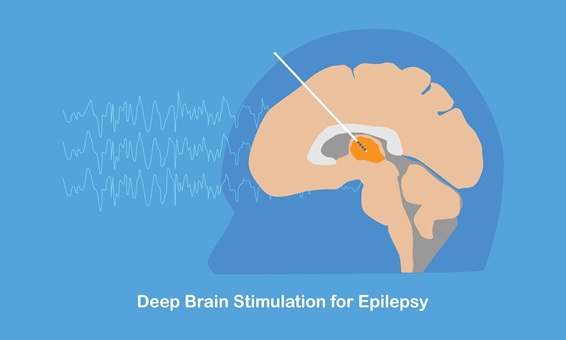Future COVID-19 Tests Could Be Based on Biomarkers and Molecular Profiles of Individuals
|
By HospiMedica International staff writers Posted on 23 Oct 2020 |

Illustration
A new study has shown how variations in SARS-CoV-2 host gene expression can be linked to variations in COVID-19 susceptibility and symptom severity. This could pave the way for better medical tests based on biomarkers and molecular profiles of individuals, to accommodate these variations in monitoring virus transmission and disease pathology, which helps guide mitigation and treatment options.
People have different susceptibilities to the SARS-CoV-2 virus and develop varying degrees of fever, fatigue, and breathing problems - common symptoms of the illness. Scientists at the University of California, Riverside (Riverside, CA, USA) and University of Southern California (Los Angeles, CA, USA) may have an answer to explain this variation. The scientists have shown for the first time that the observed COVID-19 variability may have underlying molecular sources. The finding could help in the development of effective prophylactic and therapeutic strategies against the disease.
The SARS-CoV-2 virus hijacks human host molecules for fusion and virus replication, attacking human cellular functions. These human host molecules are collectively called SARS-CoV-2 host genes. The scientists systematically analyzed SARS-CoV-2 host gene expression, their variations, and age- and sex-dependency in the human population using large-scale genomics, transcriptomics, and proteomics. They first found similarity of host gene expression is generally correlated with tissue vulnerability to SARS-CoV-2 infection. Among the six most variably expressed genes in the population they identified ACE2, CLEC4G, and CLEC4M, which are known to interact with the spike protein of SARS-CoV-2.
Higher expression of these genes likely increases the possibility of being infected and of developing severe symptoms. Other variable genes include SLC27A2 and PKP2, both known to inhibit virus replication; and PTGS2, which mediates fever response. The scientists also identified genetic variants linked to variable expression of these genes. According to them, the expression profiles of these marker genes may help better categorize risk groups. In addition to identifying the most variable SARS-CoV-2 host genes, results from the study suggest genetic and multiple biological factors underlie the population variation in SARS-CoV-2 infection and symptom severity. Next, the researchers plan to further analyze large scale genotypes and transcriptome data of COVID-19 patients when made available and to refine the results for higher association and accuracy.
“Based on biomarkers and molecular profiles of individuals, one would hope to develop better medical tests to accommodate these variations in monitoring virus transmission and disease pathology, which helps guide mitigation and treatment options,” said Sika Zheng, an associate professor of biomedical sciences at the UC Riverside School of Medicine, who led the study.
“More comprehensive risk assessment can better guide the early stage of vaccine distribution,” added Zheng. “Tests can also be developed to include these molecular markers to better monitor disease progression. They can also be used to stratify patients to assess and ultimately enhance treatment effectiveness.”
Related Links:
University of California
People have different susceptibilities to the SARS-CoV-2 virus and develop varying degrees of fever, fatigue, and breathing problems - common symptoms of the illness. Scientists at the University of California, Riverside (Riverside, CA, USA) and University of Southern California (Los Angeles, CA, USA) may have an answer to explain this variation. The scientists have shown for the first time that the observed COVID-19 variability may have underlying molecular sources. The finding could help in the development of effective prophylactic and therapeutic strategies against the disease.
The SARS-CoV-2 virus hijacks human host molecules for fusion and virus replication, attacking human cellular functions. These human host molecules are collectively called SARS-CoV-2 host genes. The scientists systematically analyzed SARS-CoV-2 host gene expression, their variations, and age- and sex-dependency in the human population using large-scale genomics, transcriptomics, and proteomics. They first found similarity of host gene expression is generally correlated with tissue vulnerability to SARS-CoV-2 infection. Among the six most variably expressed genes in the population they identified ACE2, CLEC4G, and CLEC4M, which are known to interact with the spike protein of SARS-CoV-2.
Higher expression of these genes likely increases the possibility of being infected and of developing severe symptoms. Other variable genes include SLC27A2 and PKP2, both known to inhibit virus replication; and PTGS2, which mediates fever response. The scientists also identified genetic variants linked to variable expression of these genes. According to them, the expression profiles of these marker genes may help better categorize risk groups. In addition to identifying the most variable SARS-CoV-2 host genes, results from the study suggest genetic and multiple biological factors underlie the population variation in SARS-CoV-2 infection and symptom severity. Next, the researchers plan to further analyze large scale genotypes and transcriptome data of COVID-19 patients when made available and to refine the results for higher association and accuracy.
“Based on biomarkers and molecular profiles of individuals, one would hope to develop better medical tests to accommodate these variations in monitoring virus transmission and disease pathology, which helps guide mitigation and treatment options,” said Sika Zheng, an associate professor of biomedical sciences at the UC Riverside School of Medicine, who led the study.
“More comprehensive risk assessment can better guide the early stage of vaccine distribution,” added Zheng. “Tests can also be developed to include these molecular markers to better monitor disease progression. They can also be used to stratify patients to assess and ultimately enhance treatment effectiveness.”
Related Links:
University of California
Latest COVID-19 News
- Low-Cost System Detects SARS-CoV-2 Virus in Hospital Air Using High-Tech Bubbles
- World's First Inhalable COVID-19 Vaccine Approved in China
- COVID-19 Vaccine Patch Fights SARS-CoV-2 Variants Better than Needles
- Blood Viscosity Testing Can Predict Risk of Death in Hospitalized COVID-19 Patients
- ‘Covid Computer’ Uses AI to Detect COVID-19 from Chest CT Scans
- MRI Lung-Imaging Technique Shows Cause of Long-COVID Symptoms
- Chest CT Scans of COVID-19 Patients Could Help Distinguish Between SARS-CoV-2 Variants
- Specialized MRI Detects Lung Abnormalities in Non-Hospitalized Long COVID Patients
- AI Algorithm Identifies Hospitalized Patients at Highest Risk of Dying From COVID-19
- Sweat Sensor Detects Key Biomarkers That Provide Early Warning of COVID-19 and Flu
- Study Assesses Impact of COVID-19 on Ventilation/Perfusion Scintigraphy
- CT Imaging Study Finds Vaccination Reduces Risk of COVID-19 Associated Pulmonary Embolism
- Third Day in Hospital a ‘Tipping Point’ in Severity of COVID-19 Pneumonia
- Longer Interval Between COVID-19 Vaccines Generates Up to Nine Times as Many Antibodies
- AI Model for Monitoring COVID-19 Predicts Mortality Within First 30 Days of Admission
- AI Predicts COVID Prognosis at Near-Expert Level Based Off CT Scans
Channels
Critical Care
view channel
Smartphone Imaging System Enables Early Oral Cancer Detection
Oral cancer is often diagnosed at an advanced stage, reducing survival rates despite the mouth’s easy accessibility for visual exams. Many dentists and hygienists can identify abnormal lesions but lack... Read more
Swallowable Pill-Sized Bioprinter Treats GI Tract Injuries
Soft tissue injuries in the gastrointestinal tract, such as ulcers and hemorrhages, are typically treated through invasive surgical procedures that carry high risks and do not always result in permanent repair.... Read moreSurgical Techniques
view channel
Minimally Invasive Endoscopic Surgery Improves Severe Stroke Outcomes
Intracerebral hemorrhage, a type of stroke caused by bleeding deep within the brain, remains one of the most challenging neurological emergencies to treat. Accounting for about 15% of all strokes, it carries... Read more
Novel Glue Prevents Complications After Breast Cancer Surgery
Seroma and prolonged lymphorrhea are among the most common complications following axillary lymphadenectomy in breast cancer patients. These postoperative issues can delay recovery and postpone the start... Read morePatient Care
view channel
Revolutionary Automatic IV-Line Flushing Device to Enhance Infusion Care
More than 80% of in-hospital patients receive intravenous (IV) therapy. Every dose of IV medicine delivered in a small volume (<250 mL) infusion bag should be followed by subsequent flushing to ensure... Read more
VR Training Tool Combats Contamination of Portable Medical Equipment
Healthcare-associated infections (HAIs) impact one in every 31 patients, cause nearly 100,000 deaths each year, and cost USD 28.4 billion in direct medical expenses. Notably, up to 75% of these infections... Read more
Portable Biosensor Platform to Reduce Hospital-Acquired Infections
Approximately 4 million patients in the European Union acquire healthcare-associated infections (HAIs) or nosocomial infections each year, with around 37,000 deaths directly resulting from these infections,... Read moreFirst-Of-Its-Kind Portable Germicidal Light Technology Disinfects High-Touch Clinical Surfaces in Seconds
Reducing healthcare-acquired infections (HAIs) remains a pressing issue within global healthcare systems. In the United States alone, 1.7 million patients contract HAIs annually, leading to approximately... Read moreHealth IT
view channel
Printable Molecule-Selective Nanoparticles Enable Mass Production of Wearable Biosensors
The future of medicine is likely to focus on the personalization of healthcare—understanding exactly what an individual requires and delivering the appropriate combination of nutrients, metabolites, and... Read moreBusiness
view channel
Philips and Masimo Partner to Advance Patient Monitoring Measurement Technologies
Royal Philips (Amsterdam, Netherlands) and Masimo (Irvine, California, USA) have renewed their multi-year strategic collaboration, combining Philips’ expertise in patient monitoring with Masimo’s noninvasive... Read more
B. Braun Acquires Digital Microsurgery Company True Digital Surgery
The high-end microsurgery market in neurosurgery, spine, and ENT is undergoing a significant transformation. Traditional analog microscopes are giving way to digital exoscopes, which provide improved visualization,... Read more
CMEF 2025 to Promote Holistic and High-Quality Development of Medical and Health Industry
The 92nd China International Medical Equipment Fair (CMEF 2025) Autumn Exhibition is scheduled to be held from September 26 to 29 at the China Import and Export Fair Complex (Canton Fair Complex) in Guangzhou.... Read more

















